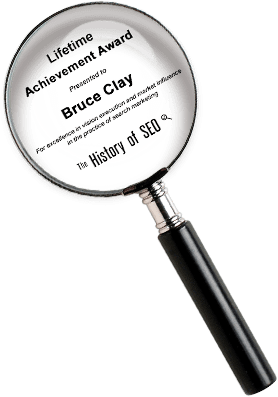21 Secrets of Top Converting Websites
Do you want success from your online business? The key metric to identify whether or not your online footprint is up to par is your conversion rate. Please note that the average conversion rate is 2-3 percent, so we want you to set your standards high and aim for 10 percent or more. This article will present 21 tips to improve your conversion rate.
- Top 21 Secrets
- FAQ: How can I transform my online business through advanced conversion rate optimization techniques?
Top 21 Secrets
Communicate Unique Value Propositions (UVPs) and Unique Customer Propositions (UCPs): Your website should clearly convey why customers should choose to do business with you. By reminding them of the benefits and value you offer, you’ll increase their motivation to engage with your brand.
- Make persuasive and relevant offers: Free shipping stands as the number one motivator for people to make a purchase. Crafting compelling offers that resonate with your target audience will significantly boost conversions.
- Reinforce the offer site-wide: Consistency is key to instilling confidence in your customers. Ensure that your entire website supports and reinforces the offer, as any erosion of trust can lead to a high bounce rate.
- Maintain scent throughout the customer journey: Every touchpoint, from banner ads to landing pages, should maintain a consistent visual and messaging flow. Optimize not only your landing pages but also don’t forget about the customer journey.
- Make a great first impression: Implement storytelling to create a seamless customer journey. This will also impact your target audience’s first impression of your brand online.
- Appeal to multiple personas/segments: Recognize that different customers have varying decision-making processes. Build predictive models using personas that encompass decision-making styles, buying stages, and basic segmentation. Robust personas can even incorporate psychological profiles such as the Myers-Briggs Type Indicator.
- Avoid excessive page optimization: Instead of creating numerous variations of a page, focus on the impact by utilizing the Persuasion Architecture® process. Testing for impact rather than variations saves time, resources, and opportunity costs.
- Leverage social commerce and the voice of the customer: Take inspiration from Amazon, the pioneer of leveraging customer content to drive sales. User reviews, which can be poems, romance stories, or jokes, play a crucial role in building trust and convincing potential customers to make a purchase.
- Utilize social commerce for navigation: Help your customers easily navigate and sort through your products. Implement features like a “sort by rating” option to drive conversions.
- Harness social commerce for promotions: Incorporate user-generated content in your email campaigns to enhance conversions. Genuine testimonials and experiences shared by customers can significantly influence purchasing decisions.
- Establish credibility through social commerce: Increase trust by showcasing return rates or customer satisfaction ratings. This transparency builds credibility and reassures customers about the quality and fit of your products.
- Utilize social commerce for feedback and research: Tap into affordable solutions like UserTesting.com to gather user feedback and conduct usability testing. Remember, it’s not just about how things work but also about the overall experience.
- Apply persuasion principles: Employ principles like scarcity, reciprocation, authority, consistency, consensus, and links to make your website more persuasive. Focus on enhancing the persuasive elements of your content and design.
- Make forms engaging: Avoid requiring users to create an account up front. Instead, place the account creation process on the thank-you page after they have made a purchase. By removing this barrier, you increase the likelihood of repeat conversions.
- Provide point-of-action assurances: Assure users of a secure and hassle-free experience, addressing their concerns and making them comfortable throughout the process. This instills confidence and encourages them to stay engaged.
- Keep users informed and engaged: Provide relevant information, such as expected shipping times and clear explanations of what will happen after completing a form. Keeping users in the loop enhances their trust and encourages them to follow through.
- Consider email preview: Ensure your email campaigns appear appealing and informative in preview panes. Optimize the content and layout to entice recipients to open and engage with your emails.
- Allocate budget for continuous improvement: Enhancing your website’s user experience is crucial for long-term success. Prioritize allocating resources to improve your site rather than solely focusing on advertising.
- Utilize a prioritization system: With countless aspects to improve on your site, prioritization becomes essential. Develop a system to rank tasks based on available resources and potential impact. This helps gain buy-in from your organization.
- Make data-driven decisions: Regularly review web analytics to identify challenges and areas for improvement. Create a to-do list based on your findings, outlining what marketing efforts or parts of your site require attention and testing.
- Execute changes rapidly: The ability to adapt quickly is essential in the fast-paced online world. Be prepared to make changes every day and every hour, staying agile and responsive to optimize your website continually.
- Continue making changes: As time goes on, continue to make changes to stay in-line with your brand goals.
Following these 21 secrets’ll equip you with the knowledge and strategies necessary to improve your website’s conversion rate and achieve exceptional results in the competitive online business landscape.
Remember, optimizing your website for higher conversion rates is an ongoing process. Implement these strategies, test, and refine them to uncover what works best for your specific business. With persistence and a data-driven approach, you’ll be on your way to achieving great conversion rates and realizing your online business’s full potential.
Ready to unlock your website’s full potential and boost conversions? Implement these 21 expert strategies to elevate your online business game and achieve remarkable success today. Contact us.
FAQ: How can I transform my online business through advanced Conversion Rate Optimization techniques?
Staying ahead requires more than just a digital presence. To truly transform your online venture, mastering advanced Conversion Rate Optimization (CRO) techniques is key. Let’s delve into the world of CRO and explore strategies to elevate your business to new heights.
- Understanding the Buyer Intent:
Before diving into the intricacies of CRO, it’s vital to decipher the intent behind your audience’s searches. Identify buyer intent search terms, such as “best deals,” “reviews,” or “compare prices.” These insights will guide your CRO strategy, ensuring alignment with what potential customers are seeking.
- Crafting Compelling Landing Pages:
A critical aspect of CRO involves optimizing your landing pages. Make them visually appealing, user-friendly, and tailored to the specific needs of your audience. Ensure that the content directly addresses the buyer’s intent, leading to a seamless journey from landing to conversion.
- Implementing A/B Testing:
A/B tests are one of the most powerful tools in a CRO’s toolbox. Try testing different headlines, images, and calls-to-action with your audience to see which resonates with them best. This iterative process focuses on the most effective elements, continuously refining your conversion strategy.
- Personalization for Enhanced Engagement:
Tailoring your content to individual users can significantly impact conversion rates. Leverage data to create personalized experiences, offering relevant product recommendations or customized messaging based on user behavior. This personal touch enhances engagement and fosters a stronger connection with your brand.
- Streamlining the Checkout Process:
A common pitfall in online businesses is a cumbersome checkout process. Simplify and streamline this crucial step to minimize friction. Optimize form fields, offer guest checkout options, and provide transparent shipping information to enhance the user experience.
Transforming Your Online Business: A Step-by-Step Guide
- Conduct thorough keyword research to understand the search landscape and identify buyer intent terms.
- Develop targeted landing pages that align with the identified keywords, providing a seamless user experience.
- Implement A/B testing on critical elements of your pages, such as headlines, images, and calls to action, to optimize for conversion.
- Dive into user data to create personalized experiences, enhancing engagement and building stronger connections.
- Evaluate and streamline the checkout process to minimize friction and improve user satisfaction.
- Regularly monitor and analyze analytics data to identify trends and refine your CRO strategy.
Mastering advanced CRO techniques is the linchpin to transforming your online business. By understanding buyer intent, optimizing landing pages, embracing A/B testing, personalizing user experiences, and streamlining the checkout process, you pave the way for sustained success. Elevate your online presence, boost conversions, and leave a lasting impression on your audience through the art and science of Conversion Rate Optimization.
This article was updated on December 14, 2023.
26,000+ professionals, marketers and SEOs read the Bruce Clay Blog
Subscribe now for free to get:
- Expert SEO insights from the "Father of SEO."
- Proven SEO strategies to optimize website performance.
- SEO advice to earn more website traffic, higher search ranking and increased revenue.

9 Replies to “21 Secrets of Top Converting Websites”
Thanks for the Great Tips Some times you need to step back and take a look at what your doing.
I have book marked your page so I can come bact often.
I didn’t know that Amazon was the first site to do that with customer reviews, but its a great point because I know many people like to read those before committing to a purchase. Anything you can do to increase customer confidence is a great idea.
@Wynne … meaning multivariate testing, and I think he’s right. It will take a lot clicks if you starting getting into 4+ plus pieces of content to swap. So if you don’t have huge traffic and the ability to just let it run for a while … it will take a long time to get a winner before it’s statistically relevant. A/B I think is a good start … or even A, B, C, D. If you have 3 pieces of content to swap out in a multivariate test … that’s 9 different total pages you are testing!
So you can see how it will make for a long test.
Thanks for your notes … or is that the info he said would be online? The link to get the presentation seems to push me to buy courses, but I can’t find the presentation he did yesterday. I was in attendance and specifically skipped the notes when he said not to bother taking them. Very impressive presentation, it was exactly what I was looking for.
I very well might be brain dead, maybe someone has the link to the PPT directly? I did create an account … feeling kinda dumb right now! :P
Hi skattabrain, what you see on this page are my notes from Bryan’s presenttion. It’s always my pleasure to provide session notes in the form of liveblogging. :) I just tried to get to the presentation from the link he provided so I could see if I could figure out how to get there, but I’m also having no luck… Sorry I couldn’t be of more help.
Glad to see it’s not jsut me! Thanks Virginia!
Too bad too, I just got an email from SES pointing to all the presentations, but Bryan’s is missing from the list.
I guess that’s a lost conversion. :(
A lot of info there. Point 7 was unclear to me – don’t slice and dice? Do you mean not split testing variations of the same page?
LEAVE A REPLY









